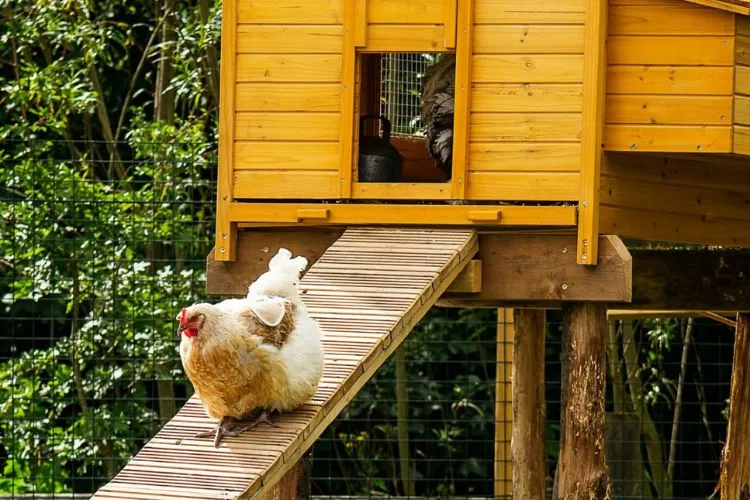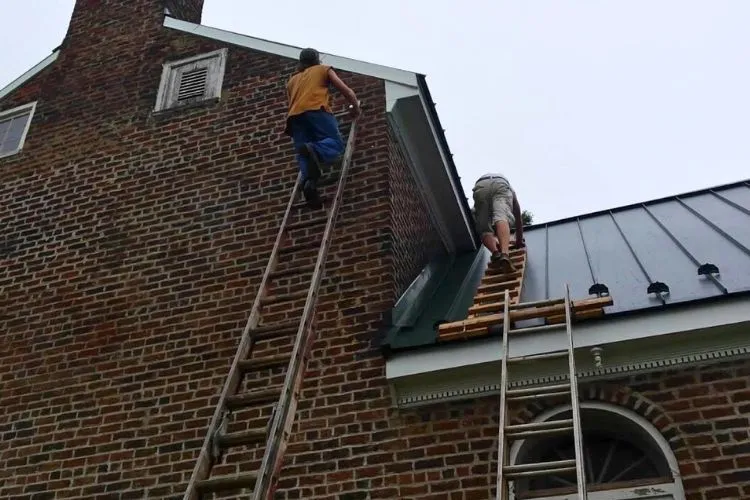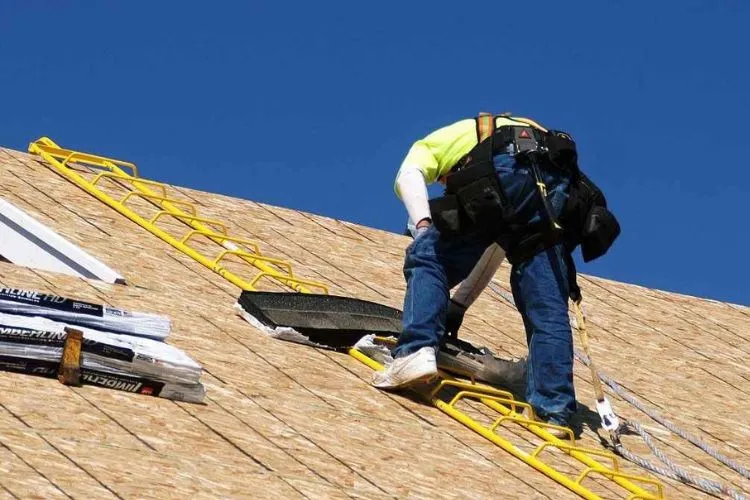When we hear the term “chicken ladder,” it might evoke a sense of curiosity. What is a chicken ladder?
This unique tool serves crucial functions in both construction and poultry care. This article dives deep into the essence, benefits, and applications of chicken ladders.

What Is a Chicken Ladder?
A chicken ladder is not just any ladder. It has a special design that suits specific needs. The history of chicken ladders goes back to when safety and convenience in both construction and poultry farming became priorities.
There are two main types of chicken ladders. One serves roofing and construction projects. The other enhances poultry care.
In construction, a chicken ladder ensures safety on steep roofs. It has hooks that secure it to the roof, preventing slips. Its design focuses on durability and stability. Safety features are paramount.
Rubberized feet and sturdy materials like aluminum are common. Choosing the right chicken ladder for roofing depends on roof type and the project’s scope.
Poultry farmers use chicken ladders differently. They help chickens reach higher places in the coop safely. The ladder design ensures that it is easy for chickens to climb.
It fits well in coop design, encouraging natural behaviors. Safety in coop ladders involves smooth edges and correct spacing between rungs.
Maintenance and Care
Whether for construction or poultry, maintaining a chicken ladder is key. Regular cleaning keeps it safe for use. Inspection can catch any wear or damage early.
For construction ladders, checking for stability and damage is vital. For poultry ladders, ensuring they stay secure in the coop is important.
DIY Chicken Ladder Construction
Building a chicken ladder can be a rewarding DIY project. The materials needed depend on its use. For construction ladders, durability is a must. For poultry ladders, safety and comfort for the chickens come first.
A step-by-step guide can help create a chicken ladder that meets specific needs. Pro tips often suggest starting with the end goal in mind.

Safety Guidelines and Best Practices
Safety should be the top priority when using chicken ladders, whether for construction or poultry care. Hence, observing the following best practices can minimize risks:
- Correct Installation: Ensure the installation of the chicken ladder is secure, with sturdy supports, to prevent ladders from shaking or collapsing.
- Regular Inspection: Check chicken ladders regularly for any signs of wear and tear. Do not overlook any damage, no matter how small.
- Safe Climbing Practice: Utilize correct climbing practices to maintain balance, especially in the construction scenario. Care should be taken not to overload the ladder.
- Appropriate Size: Use an appropriately sized ladder for the intended task to ensure stability and safety.
- Proper Handling of Poultry Ladders: In a poultry setting, ensure the chicken ladder is not too steep and has adequate spacing between the rungs, preventing chickens from falling. Regularly monitor its usage.
Remember, safety first! Adequate precautions and responsible usage of chicken ladders can ensure tasks proceed smoothly while minimizing potential hazards.
Alternative Uses for Chicken Ladders
Chicken ladders can be repurposed in several inventive ways, extending their functionality into gardening, home maintenance, and even decor:
- Vertical Gardening: Use as a framework to create a vertical garden by attaching pots or planters to its rungs.
- Painting Aid: Employ a chicken ladder on flat or slightly sloped roofs when painting hard-to-reach areas of your home’s exterior.
- Decorative Shelving: Convert chicken ladders into rustic shelving units for books or as a unique display for collectibles.
- Pet Accessibility: Transform them into ramps or access ladders to help pets navigate heights or obstacles easily, especially for older pets with mobility issues.
- Outdoor Entertainment: Repurpose as a support for outdoor lights or as part of an obstacle course in a backyard playground.
By thinking outside the coop, chicken ladders can be adapted for a multitude of creative uses around the home and garden.
Case Studies: Successful Applications of Chicken Ladders
of repairing a steep, fragile roof on a historic building. A customized chicken ladder provided a safe, stable platform for workers, significantly reducing the risk of damage to the ancient tiles and allowing for efficient repair work. The project was completed on time, without any accidents or harm to the structure.

Enhanced Poultry Health in a Backyard Coop: A hobbyist poultry farmer noticed her chickens were reluctant to use the existing steep ramp to access their nesting boxes, leading to decreased egg production.
After switching to a gently inclined chicken ladder with optimal rung spacing, the chickens began to navigate to and from their nesting boxes more freely. This change resulted in happier, more active chickens and a noticeable increase in egg production.
Community Garden Project: A community group converted an unused lot into a thriving vertical garden using chicken ladders. They attached planters to the rungs of several ladders, creating a visually appealing and space-efficient garden.
This innovative use of chicken ladders not only maximized the growing space but also engaged the community in sustainable urban agriculture.
These case studies illustrate the versatility and effectiveness of chicken ladders in addressing unique challenges across different fields.
Frequently Asked Questions (FAQs)
Why are they called chicken ladders?
The name likely comes from their use in poultry care, where they help chickens climb.
What is the weight capacity?
This varies by ladder type. Construction ladders support more weight.
Can they serve dual purposes?
In theory, yes. But it’s best to use them as designed for safety.
How to attach a chicken ladder securely?
For roofing, hooks secure the ladder. For poultry, anchoring it to the coop works.
Conclusion:
Chicken ladders play vital roles in safety and efficiency for roofing projects and poultry care. Choosing, using, and maintaining the right ladder is key.
Whether part of a construction toolkit or a feature in a chicken coop, chicken ladders show how specialized tools can make tasks safer and easier. Their versatility and usefulness in diverse scenarios underscore their importance.


